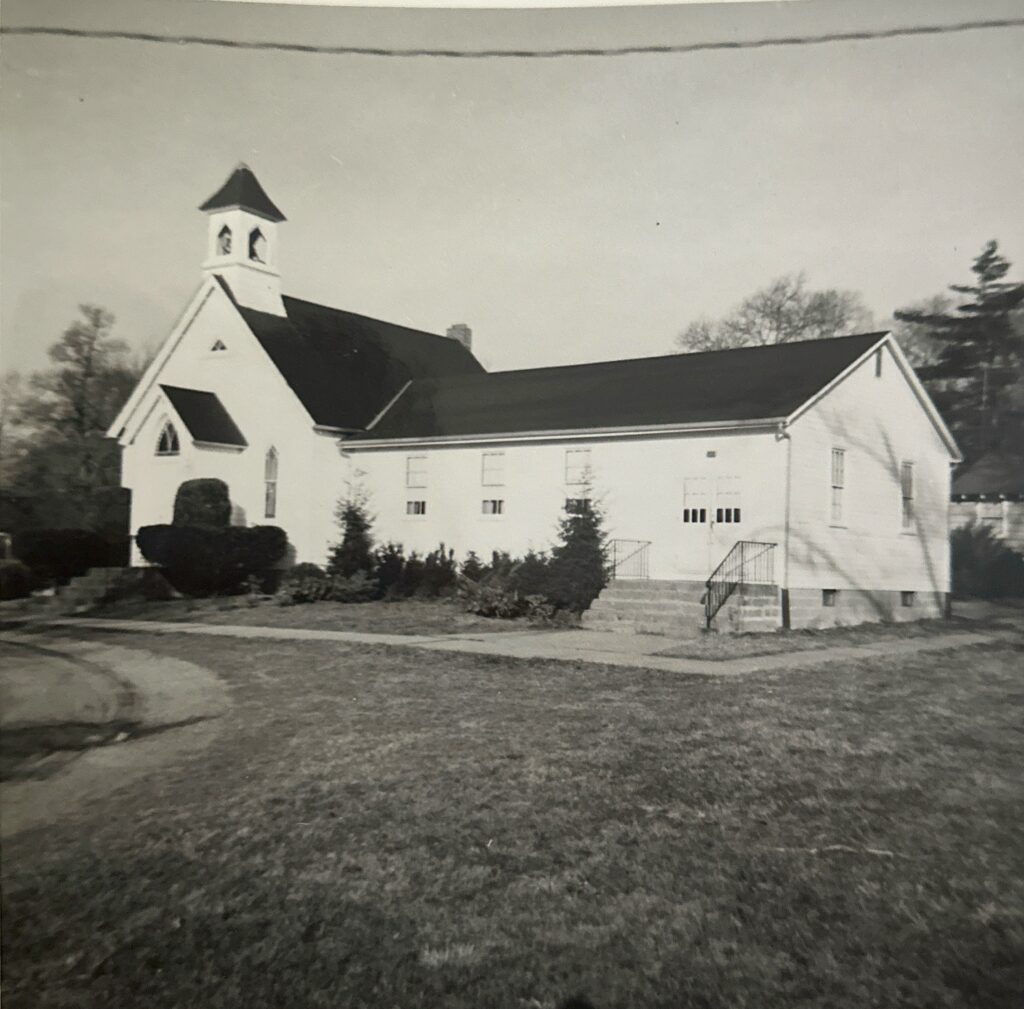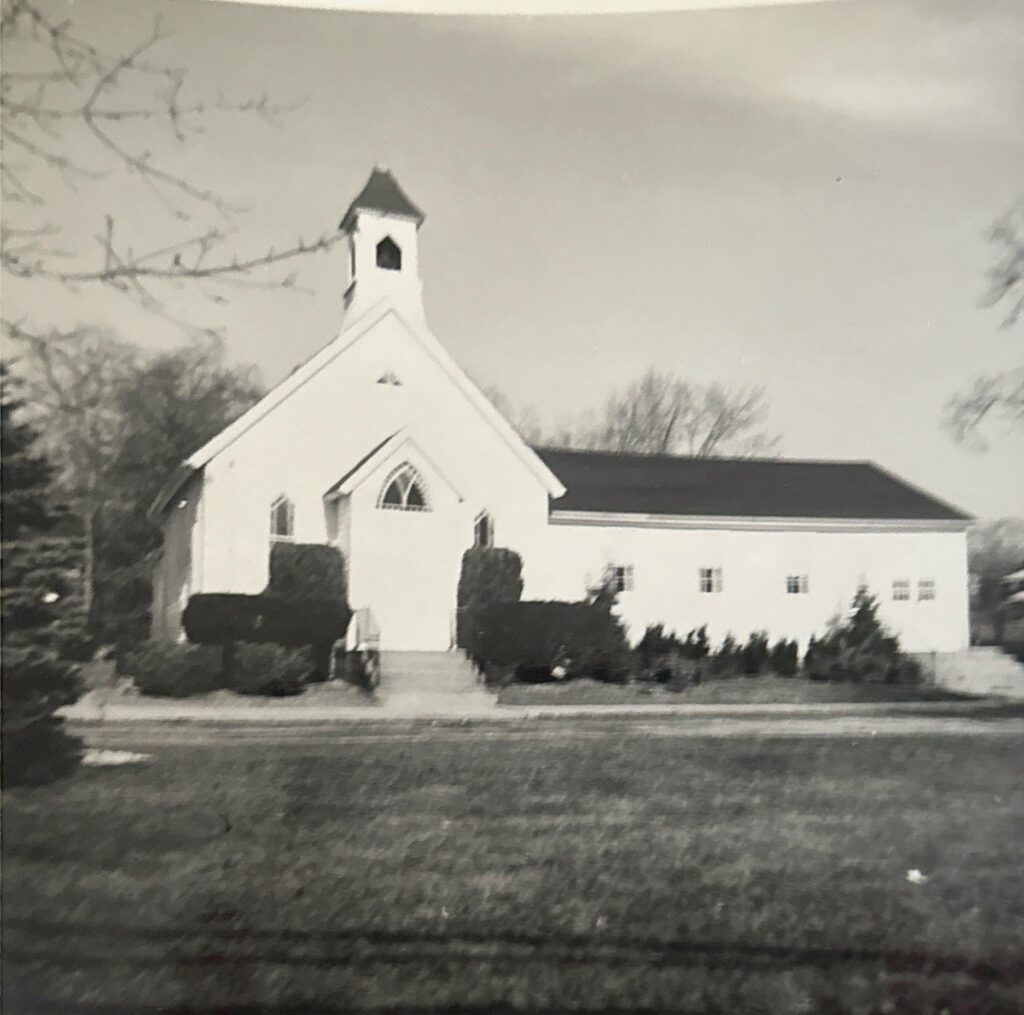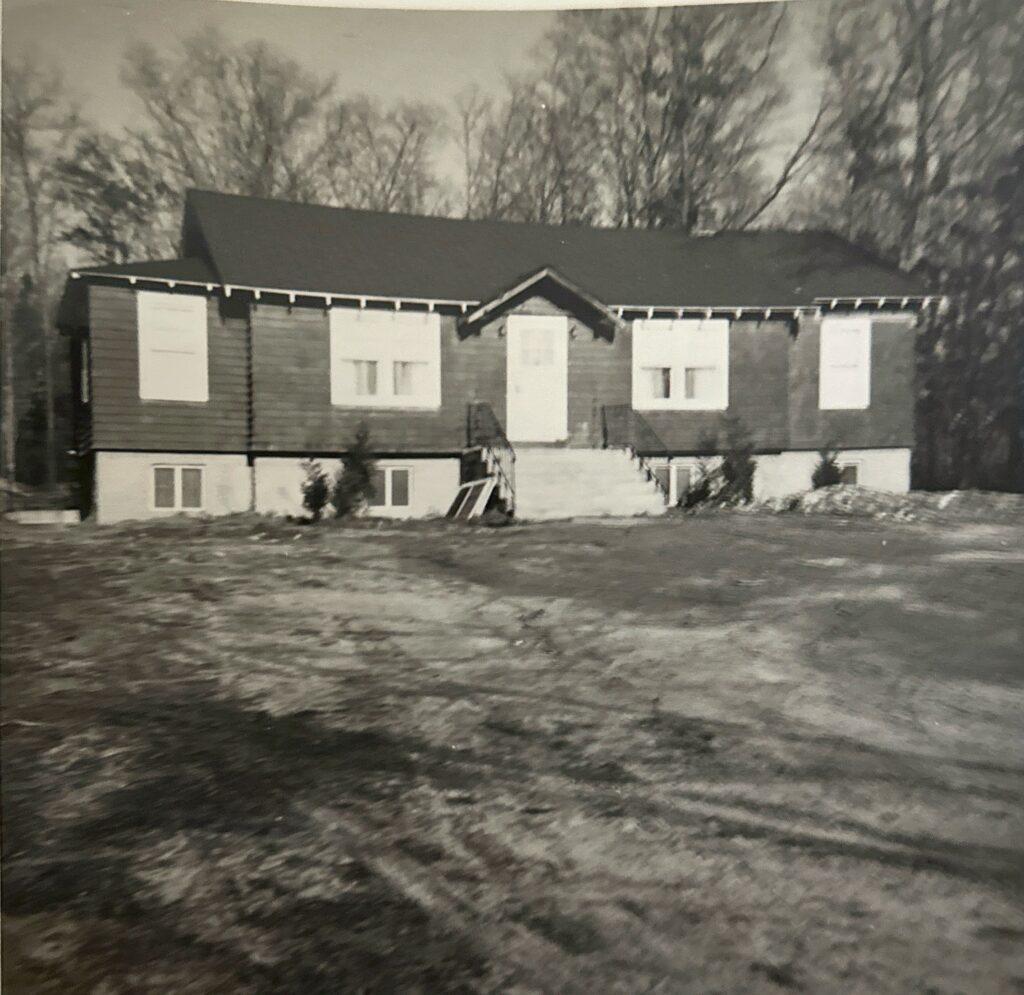Congregational Church
written by Sachem East High School Students Melisa Kucuk, Chloe Walsh, Shelby Lyons, Sarah Joscher
History of the Church Building Construction
In 1858 there was a meeting held at Daniel Terry’s home to discuss the construction of a Church in Farmingville. Construction of the church started in 1890 and cost approximately $1200 on Elijah Terry’s land. In 1927, the Ladies Aid bought an Estey Organ for $480, which was placed in the church. The wagon shed was gone and the church had a cellar in 1939, Septer Terry dug half a cellar and installed a pipeless furnace. The Church was then moved 50 feet West in 1947, which enabled a beautiful room with a fireplace. The present church office was also built during this time with rocks taken from Mooney Pond. In 1954, the name of the Farmingville Congregational Church changed to the Farmingville-Holtsville Congregational Church. A full time minister was called in 1956 and the building was moved here from Yaphank and was installed on a new foundation and cellar.
In 1958, the church celebrated its 100th anniversary. A second full time pastor was called to succeed the previous in 1960, and in 1963 construction began on a portion of the church to create a church school which was later altered to be used as the main sanctuary of the church. During this time new carpet and furniture was bought or built for the church. From 1965 to 1967, The Parish Hall became a part of the church complex due to the creation of the Long island Expressway.
Long Island Religious History and Music of the Church
In June 1858 a small group came together to start a church in Farmingville. July 31st, 1858, marks the date the church was officially organized with 28 charter members. These members include the Terry, Overton, Farmer, and Gamage families. Initially, the congregation met in the Bald Hills School House and in members’ homes. From 1858 to 1927, the church shared pastors with the New Village Church. The first minister of the Church was John Woodhull.
The Church also had various name changes throughout history.
The original name of the church was Farmingville Congregational Church in 1858. It was then changed to Farmingville-Holtsville Congregational Church in 1961 to include Holtsville residents. In 1972 it was changed to Christ’s Community Church (Congregational) U.C.C. Farmingville, New York Incorporated. Some later name changes include Christ’s Community United Church of Christ (used in 1983) and Congregational United Church of Christ of Farmingville, NY. Additionally, some significant events held at the church include: Centennial Celebration (June 28, 1958), First Confirmation Class (May 20, 1956), and the 125th Anniversary Celebration (June 26-28, 1983).
Music has always had an important role in the Church.
The first instrument was an old pump organ, purchased around 1895 from a defunct Baptist church in Holtsville. It was then sold in 1928 for $5.00. A new Estey Organ was bought by the Ladies Aid Society in 1927 for $480.00. In 1953, a Hammond Organ was purchased on February 28th funded mainly through Women’s Fellowship activities. Additionally, another Hammond electric organ was purchased in 1963.
Notable organists of the church include: Nellie Terry (1890-1917), Arthur F. Terry (1917-1947), Mrs. Larsen (1947-1963), Carolyn Walsh (1965-1966), Richard Smid (1971-1972), Emma Olsen (1972-1973), Janet Draper (1974), and Richard Erdmann (1983). In addition to being an organist Mrs. Larsen also served as choir director. A choir existed early on, directed by Mrs. Evelyn Still from 1945-1946. Florence Shackman was a singer that performed from 1944-1946. In 1958, the choir had eleven members, and there was also a junior choir directed by the organist, Mrs. Larsen.
The Community and Members of the Congregational Church
The Farmingville-Holtsville Congregational Church, known today, was established in 1858 by two families: the Terrys and the Overtons, who brought letters from the New Village Church to found the Farmingville Church.
The church began accepting members on June 29, 1858.
The first two families to join around that time were the Farmers and Gamages, who were inducted upon the profession of faith. One of the longest-serving members was Sarah R. Terry Riker, who held membership for seventy-six years. Riker’s granddaughter and great-granddaughter remained active in the church after Sarah R. Terry Riker passed away in 1858.
The first Deaconess of the church was Laura Mae Dare Terry. She was an active member for forty-nine years and maintained her seniority of membership until her death in 1967. In 1958, the oldest member of the church was Thomasin Cole; at eighty-two years old, her husband, George Cole, served as a Deacon.
Over one hundred years after the church’s founding, the area transformed from a farming community into two thriving towns, now known as Holtsville and Farmingville.
During the church’s early days, Daniel Terry Overton became the first preacher, while others stepped up to fill the roles of ministers, clerks, deacons/deaconesses, and trustees. Beginning in 1956, the church introduced full-time pastors, the first being Constance J. Vanderburg. During this time, the church also had interim leaders; one of these temporary pastors was Reverend Frank Svoboda. The church community formed a choir and had an organist to accompany their hymns and anthems, as music has always been an important part of the church. Some of the organists included Nellie Terry, Arthur Terry, and Neil Larson.
In an article written by Virginia Terry Meyer regarding her childhood memories attending the Farmingville Congregational Church, she said that her favorite celebration of the church was Christmas. Virginia had said that the church held a Pageant for children to participate in during the evening service, showing the story of the birth of Christ. After this Pageant, Santa (Bill Wentish, a member of the church who filled the role and played the role well, according to Virginia) came in and gave the children of the church gold or silver candy-filled cones or a gaily-decorated box of candy. In the article, Virginia expressed the fond memories she had formed within the church and recalled various moments of her time at the church with her family during the holidays and church services.
Bible and Church Schoolhouse
The Church Schoolhouse was considered to be quite grand, having over 150 students and a (volunteer) teaching staff with about 20 members. They used a standard church-school program, while simultaneously offering a crafts program. Originally, Sunday School was taught in the basement, until 1963 when they decided more space for class was needed. Additionally, they offered a junior choir program. On the Board of Christian Education, the members were as follows; Susan Brennan, Margaret Cantrell, Sue Corbett, Leslie DeNezzo, Betty Sadler, and the Superintendent was Valerie White.
Starting in 1858 and lasting until 1860, the Bible that was being used on the pulpit was borrowed from Brewster Terry. This Bible stopped being used in 1860 because a more “convenient” Bible was purchased. In celebration of their 100th anniversary in 1958, a new Bible for the pulpit was purchased. This ended up costing $56.88.



